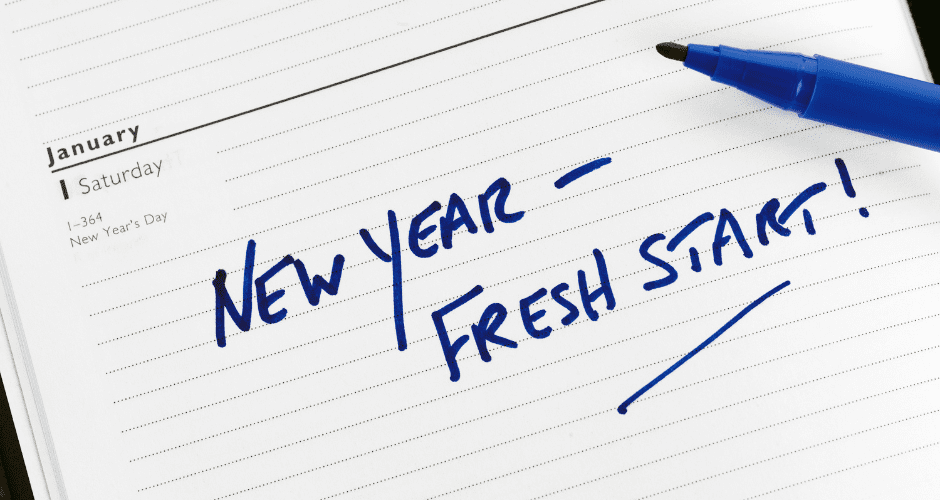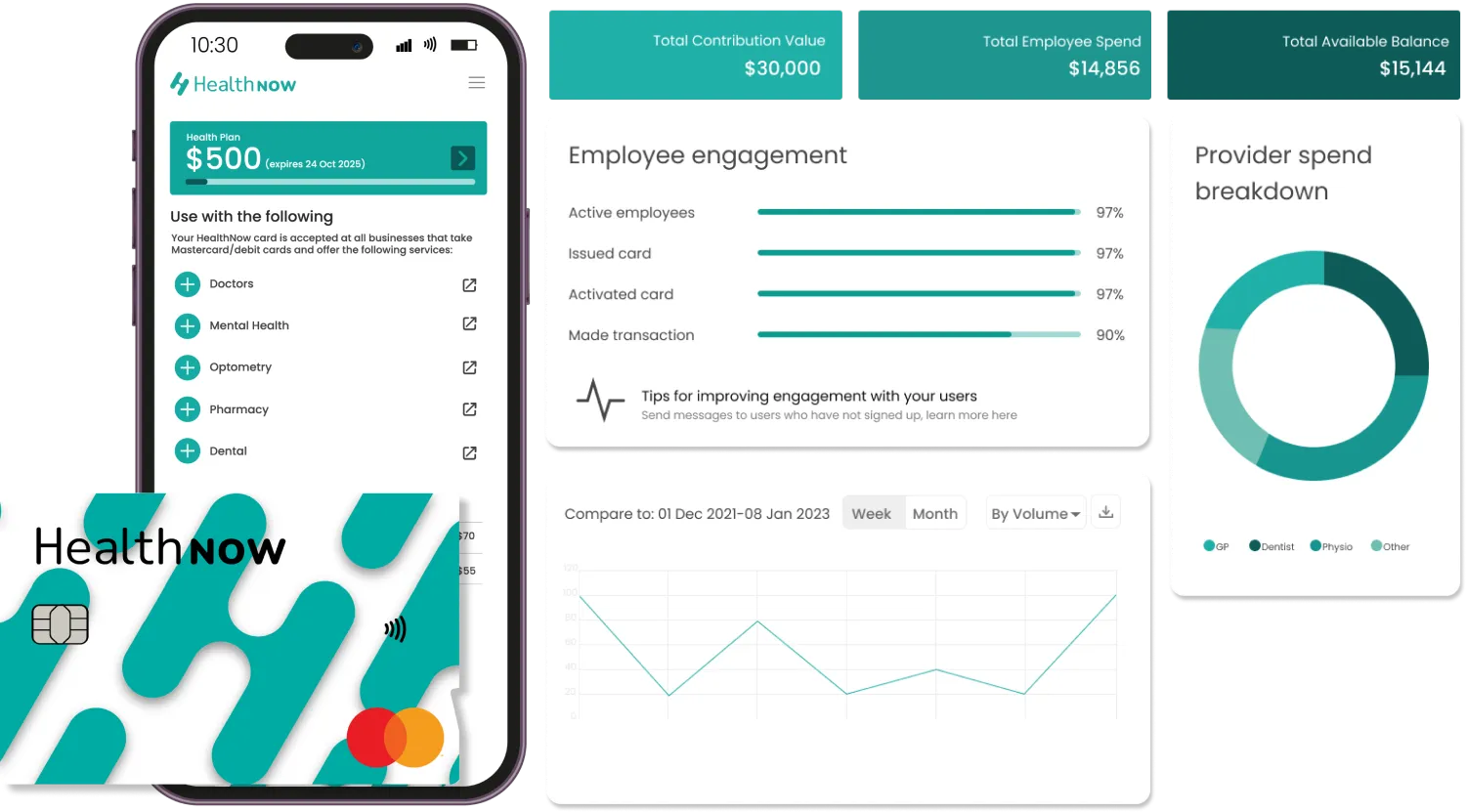Do you find New Year’s resolutions hard to keep? You’re in good company. It is estimated that 90% of people that set resolutions have at least one health or fitness-related item on there. When it comes to sticking to these goals, however, data from the US of over 800 million user-logged activities found that only 7% of people stuck to or completed their resolutions, with the majority of people giving up by January 19th.,
While the level of difficulty of the goal can influence their success or failure, a big reason that resolutions are seldom fulfilled is also attributed to their vague and murky nature. On their own, our goals are simply a mental representation of the outcome we desire, while goal setting is the process we use to identify specific, actionable goals and work out how they will be achieved. This means the way you set and articulate your goals may directly influence their outcome.
So, how should you structure your goals to set yourself up for success? Research on goal setting in recent years has yielded evidence-backed strategies for helping people set and achieve their desired goals, and we’ve simplified this research into four easy steps to help you make 2023 your best health and fitness year yet.
Set SMARTER Fitness Goals
There are numerous ways that you may choose to structure your goals. Do you want to focus on the actions you should take, like working out three times a week, or the actions to avoid, like hitting snooze, sleeping in and missing your gym sessions? Should you focus on getting a certain result, like losing a set weight, or on a skill to be developed, like learning how different types of exercise affect your body so you can use that at every workout? The answers to these questions are important because they can influence goal achievement.
The acronym SMART has long been used for goal setting, meaning that good goals should be Specific, Measurable, Achievable, Realistic, and Timed. In recent years the acronym has been extended to SMARTER to capture some additional factors:
Specific
Be clear and concise about what you want to achieve, and discard any ambiguous words or phrases that may be open to interpretation. Using numbers can help you be clear.
- Bad goal: Eat better
- Good goal: I will incorporate at least four colourful vegetables into every dinner
Measurable
A goal should be measurable so you can easily determine if you’re on track, and if you’ve completed it.
- Bad goal: Lose weight
- Good goal: Lose 5 kgs in three months or reduce my body fat down to 20% by the first of September.
In this example, at the halfway point of the goal, you will be able to measure whether you half lost 2.5kgs or are on track to having your body fat percentage down enough to meet your goal by September.
Achievable
Your goal should be something that you are theoretically capable of achieving if you wanted to, meaning that you already have – or it is possible for you to have – the resources to achieve the goal.
- Bad goal: I’d like to start running, and also successfully finish a marathon in one month’s time
- Good goal: I’d like to start running, and complete my first marathon in nine months’ time, attending weekly training with my sports physio or running coach
Realistic
Whether your goal is realistic is usually judged in the context of whether the goal is relevant, appropriate or sensible for you given your unique set of circumstances and your values.
- Bad goal: I’m going to make every meal nutritious
- Good goal: I’m going to learn how to incorporate a range of nutritious options into my daily meals by working with a dietitian or nutritionist
Time-Bound
Give yourself a specific timeframe to complete the goal or work towards it.
- Bad goal: See my physio regularly to finally get out of pain so I can exercise
- Good goal: Attend one physiotherapy appointment every fortnight until my pain level is at a zero.
Evaluate
We know that when things are in front of our eyes, we are more likely to think about them and act on them. That’s why regularly evaluating your goals – especially longer-term ones, can help set you up for success. Some people choose to review their goals daily, while others may do so bi-weekly, weekly or fortnightly.
-
- Bad plan: set a six-month weight loss goal, create a roadmap and milestones to get there, but only revisit the plan at the halfway point and at the six-month mark.
- Good plan: evaluate how you’re tracking every week compared to your roadmap, and make small changes as needed to keep yourself on track.
Readjust
We touched on it in the last ‘good’ example where you can make changes to help keep yourself on track. Readjusting means that you tweak your method or techniques to help you overcome any barriers, take into account any new information you’ve learnt, and better position yourself for meeting that goal. Small regular changes are a lot easier to implement than occasional big ones.
Two: Create An Action Plan
Action plans specify where, when, and how a goal will be implemented. A SMARTER goal is a fantastic goal setting strategy, but it won’t lead to any action without a clear plan around how to do it.
If your goal is to go for a 30-minute walk five days per week for the next four weeks, then your action plan may include:
- Where: On my way to work, and in my neighbourhood on the days I’m not at work or am unable to walk to work
- When: Leaving home at 8am to get to work by 8.30am. If I can’t walk to work, between 7-7.30am in my neighbourhood.
- How: Wearing sneakers and bringing my work shoes with me to change into when I get to work.
Three: Find An Accountability Partner Or Personal Trainer
An accountability partner knows your goals and your plans to achieve them, and holds you accountable for your performance regularly. They may check in with you on a weekly basis, send you motivational messages – or may even share your fitness goals with you so you can reach them together. If you don’t have anyone that can be your accountability partner, you could engage a personal trainer, fill them in on your goals, get their help and have them check in with you at your weekly sessions. Having an accountability partner that joins in your exercise or a personal trainer may also provide some social motivation, which has been shown to make it easier to stick to your goals and increases your likelihood of success.,
Four: Take Advantage Of Employer Aid Payments & Digital Health Wallets
The reality is that with a lot of health-related goals, we need help. Whether it’s to see a nutritionist to learn about better food choices or to see a physio so you can exercise regularly without pain – utilising the expertise of others goes a long way to helping us succeed, instead of getting stuck feeling overwhelmed from not seeing results, then eventually giving up.
While the notion of getting professional help is straightforward, accessing these services is very difficult for many people due to the cost. This is where HealthNow’s employer aid service and digital health wallet come in. Instead of offering you a contribution to your private health insurance with its strict policies and exclusions, you can ask your employer to contribute to your free, private and secure digital health wallet so you can spend the funds on pursuing your health in the way you want – and in the way that matters to you and your goals.
Simply present your app at any HealthNow-affiliated health or medical service and the funds will be deducted like an EFTPOS transaction. No stand-down periods, or small-fonted terms and conditions. HealthNow’s digital health wallet remains free for all users, with the goal of making healthcare more accessible for all.
Learn more about HealthNow’s Employer Aid programme here.








